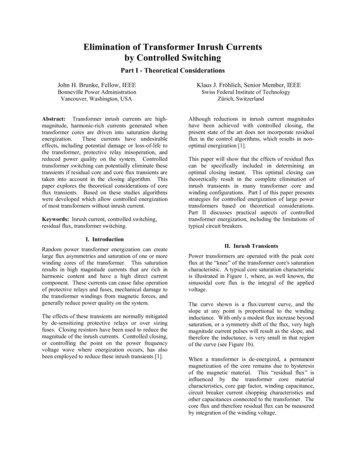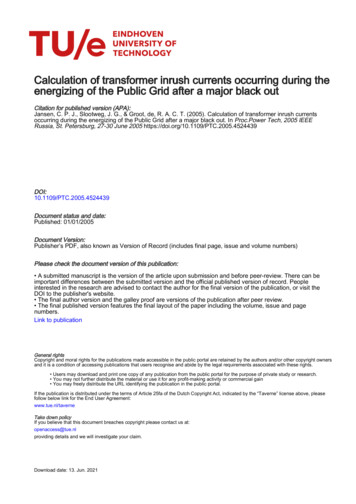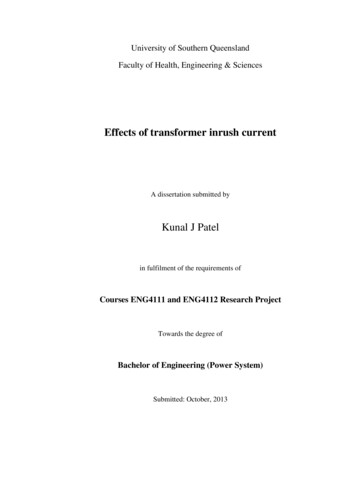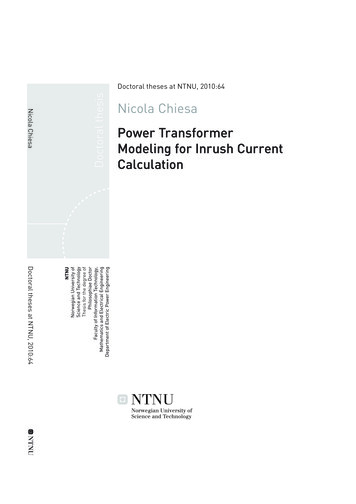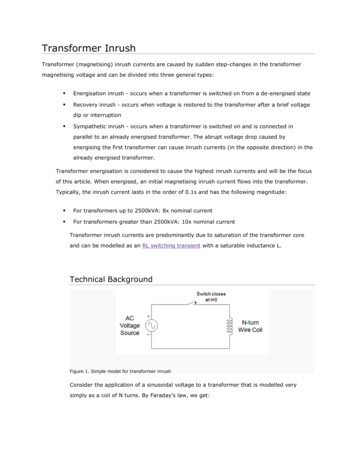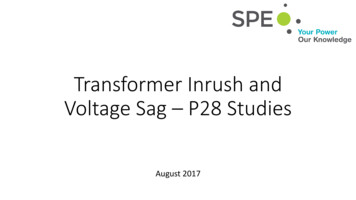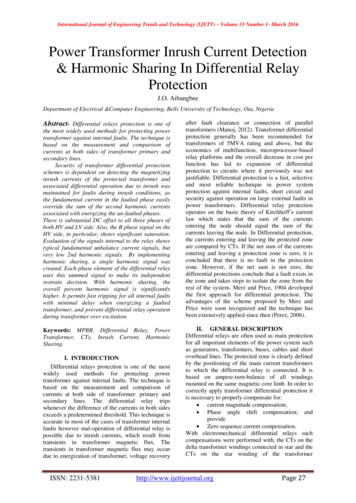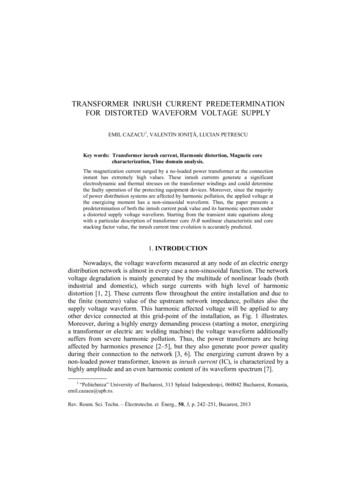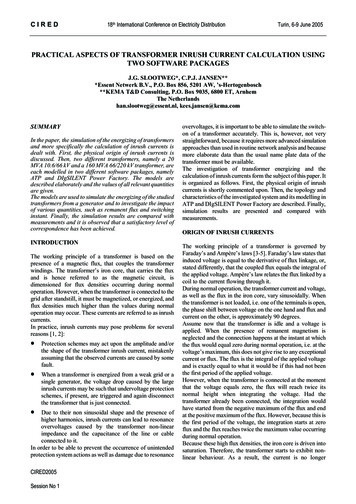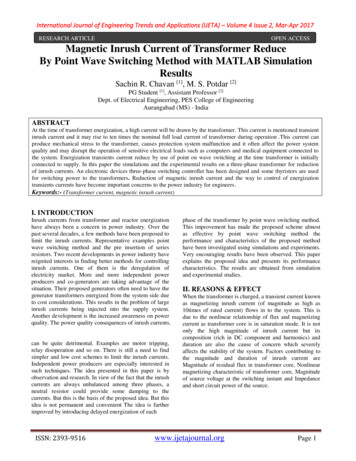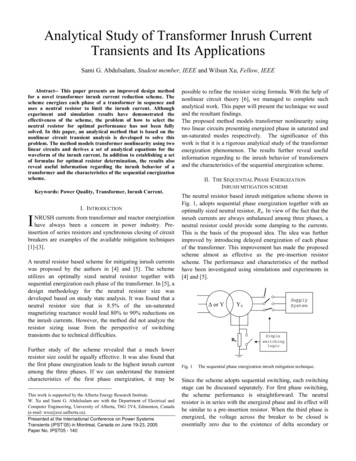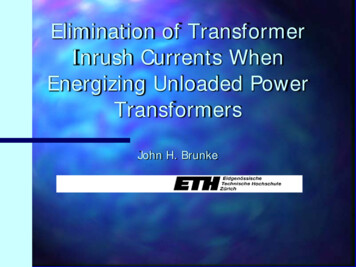
Transcription
Elimination of TransformerInrush Currents WhenEnergizing Unloaded PowerTransformersJohn H. Brunke
Presentation OutlineBasics of transformer inrush transients Three phase transformer core fluxtransients based on model studies New controlled closing strategies Statistical performance
Transformer CoreCharacteristicsFluxCurrent12
Energizing a Transformer
Transformer Inrush Current4000Time 0.05 ms/div0.0Amperes4000
Optimal controlled closing
Three Phase Transformers
Core Flux - No residual
Prospective and Dynamic Flux0.800.0Flux, zero residual42.046.050.054.058.0Time ms1FluxkV-0.80
Three phase residual fluxTime 3 ms/div
Core flux with residual flux800Core flux, EMTP Study0.0Time 6 ms/divVs-800
Prospective and Dynamic Flux0.80Flux, residual 0%, -70%, 70%CB0.042.046.0A50.054.058.0Time msFlux kVs-0.80
Prospective and Dynamic Flux8000.0Time 6 ms/divVs-800
Closing Strategies Rapid closing strategy– Requires detailed transformer data andlook up table Delayed Closing strategy– Generalized approach Three phase strategy– Limited to high residual flux scenarios
Verification - Laboratory TestsRapid Closing ent0.0TimeAmperes-20
Verification - Laboratory TestsDelayed Closing Strategy.80000.0Vs-.8000Time 6 ms/div
Effect of Closing ErrorPeak Inrush CurrentAmperesModel Study Results, Peak Inrush Current for a 70%Residual as a Function of Closing Angle3500300025002000150010005000-500 0510-1000Closing Time ms1520
Prestrike800.400.0.0-400.kV-800.Time 2 ms/div
Statistical StudiesBenchmarks - linear bias runs withstatistical pole span 1000 studies/run Controlled studies - 200 studies/run 0.5,1.0, 1.5, 2.0 ms timing error ranges
Statistical PerformanceCLOSING TIMESCATTER, 3 SIGMALEVEL EXCEEDING2% AMPERESPERCENTREDUCTION FROMUNCONTROLLED e 5.3. The improvement in performance using controlled closing with a70% residual flux. .
Transformer Model
Effect of CapacitanceTimeFluxTimeFlux
State of the ArtPeak Inrush Current as a Function of OpeningTimePeak Inrush .40.60.8Opening Time over One PowerFrequency Cycle1
Delayed PerformancePeak Inrush Current (2% Probability of occurrence)as aFunction of Closing Time ScatterWorst Phase Peak InrushCurrent 00,35,-3530070,-40,-30200100000.511.52Closing Time Scatter (3 sigma) ms2.5
Three Phase PerformancePeak Inrush Current as a Function of Closing TimeScatterWorst Phase PeakInrush ,-.5,.5200000.511.52Closing Time Scatter (3 sigma) ms2.5
Rapid Closing PerformancePeak Inrush Current (2% Probability of occurrence) as aFunction of Closing Time ScatterWorst Phase Peak InruchCurrent Amperes70060050040070,0,-70%0,-70, 70%300200100000.511.52Closing TIme Scatter (3 sigma) ms2.5
ConclusionsIt is possible, by considering residualflux together with the appropriateclosing strategy, to eliminatetransformer inrush currents in mosttransformer configurations With consideration of breaker closingscatter, a reduction of typically 90% ofworst, can be achieved
Transformers John H. Brunke . Presentation Outline . Peak Inrush Current (2% Probability of occurrence)as a Function of Closing Time Scatter 0 100 200 300 400 500 600 700 800 0 0.5 1 1.5 2 2.5 Closing Time Scatter (3 sigma) ms Worst Phase Peak Inrush Current Amperes 70,-70,0 0,0,0 0,-70,70 0,70,-70 0,35,-35 70,-40,-30. Three Phase Performance Peak Inrush Current as a Function of
